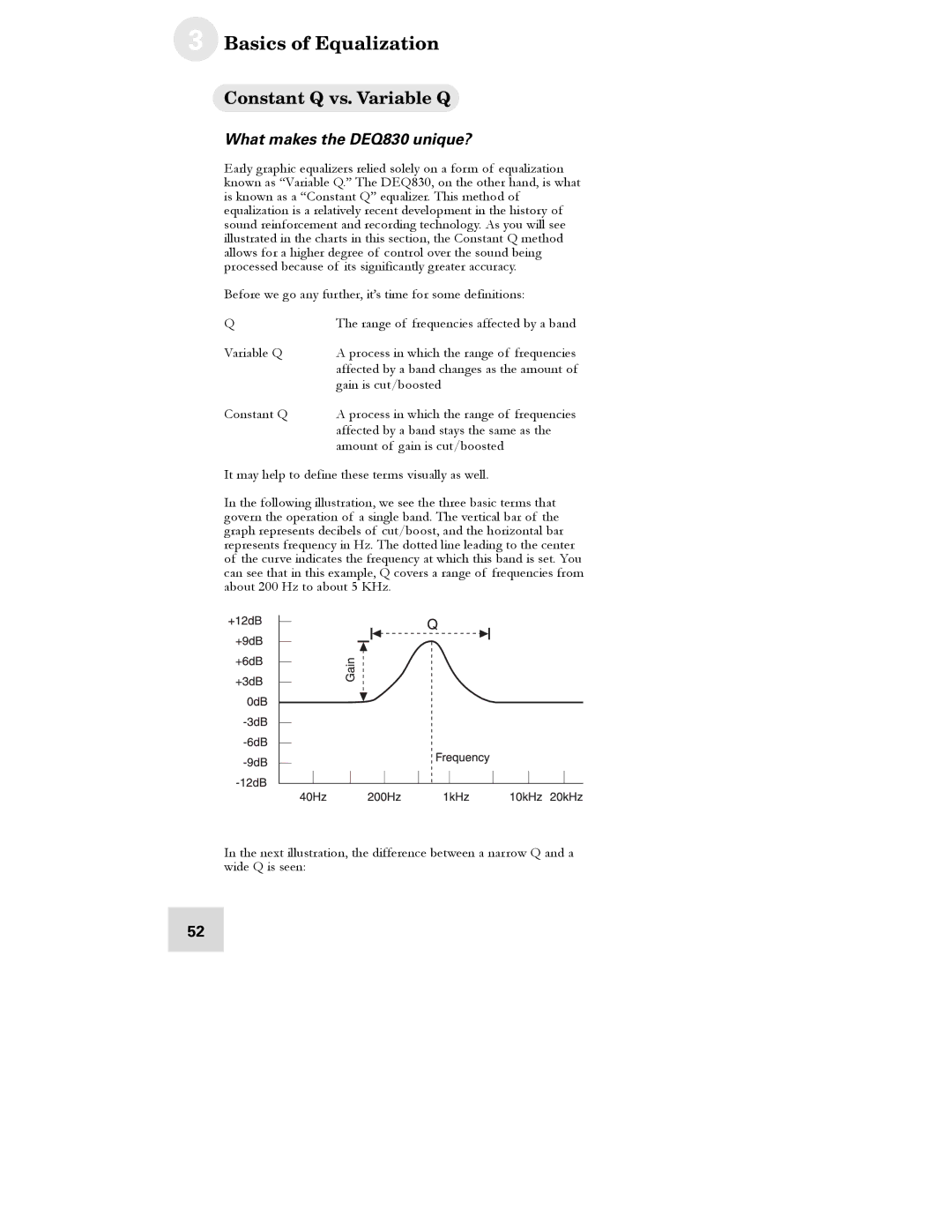
3 Basics of Equalization
Constant Q vs. Variable Q
What makes the DEQ830 unique?
Early graphic equalizers relied solely on a form of equalization known as “Variable Q.” The DEQ830, on the other hand, is what is known as a “Constant Q” equalizer. This method of equalization is a relatively recent development in the history of sound reinforcement and recording technology. As you will see illustrated in the charts in this section, the Constant Q method allows for a higher degree of control over the sound being processed because of its significantly greater accuracy.
Before we go any further, it’s time for some definitions:
Q | The range of frequencies affected by a band |
Variable Q | A process in which the range of frequencies |
| affected by a band changes as the amount of |
| gain is cut/boosted |
Constant Q | A process in which the range of frequencies |
| affected by a band stays the same as the |
| amount of gain is cut/boosted |
It may help to define these terms visually as well.
In the following illustration, we see the three basic terms that govern the operation of a single band. The vertical bar of the graph represents decibels of cut/boost, and the horizontal bar represents frequency in Hz. The dotted line leading to the center of the curve indicates the frequency at which this band is set. You can see that in this example, Q covers a range of frequencies from about 200 Hz to about 5 KHz.
In the next illustration, the difference between a narrow Q and a wide Q is seen:
52
